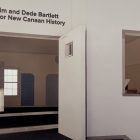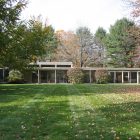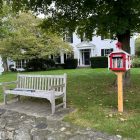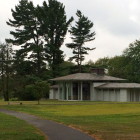Around Town
Work Starts at NCM&HS for ‘Bartlett Center for New Canaan History’; May 31 Grand Opening Planned
|
After moving to an historic Oenoke Ridge property many years ago, Dede Bartlett discovered that she and her husband were just its thirteenth owners since 1749. Soon after, Bartlett said, she began to find “incredible artifacts all over the property—pottery shards, horseshoes, old tools.”
“It’s marvelous,” she said Monday morning from the large room that used to house the research library on the main floor of the New Canaan Museum & Historical Society.
“We’ve got two antique barns that are well over 200 years old. And I thought, we really should be doing something more with that. So [NCM&HS Executive Director] Nancy [Geary] and I have worked on a number of projects over the years. Probably three or four projects.





